Apart from cases in which a designer is commissioned to design a specific item, it is my experience that there are basically two starting points for developing a product:
1. A wish to express oneself through new forms and structural designs.
2. A wish to solve a problem.
Working method
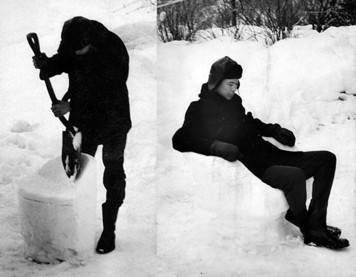
For me personally, the most common working method has been to make note of a need and then develop a solution or a product that will meet this need. The actual creative moment occurs when I discover the need itself. Finding the solutions is often more of an analytical process.
New materials, new manufacturing techniques or new principles of construction may also provide the impetus to begin development of innovative products.
The act of observing
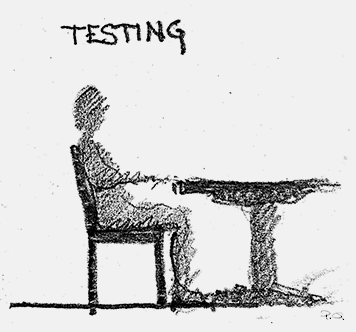
People who want to help shape human beings' material surroundings must be good at observing people's behaviour.
Observation in this context may be defined as the art of noticing how others (and oneself) use and interact with objects in our surroundings. Designers should question the usefulness of these objects and existing solutions.
Mentally on or in the chair
When I first start working on a chair or another device intended for long-term sitting, I place myself on it or in it mentally – as opposed to merely visualising it from the outside.
Obviously, starting out by sensing the object as opposed to seeing it can result in entirely different forms than the generally accepted ones.
The reverse is when the expression or the visual form is more important than the function.
Dream design
One of the most common constraints on product development is that people think too conventionally.
When we dream, these kinds of checks are switched off, and thoughts, ideas and experiences mingle freely without being overridden by restrictions or conventions.
Often when I wake up early in the morning, I find that I can tap this creative capacity that is released during dreaming. I lie in bed; half awake, and think through the difficulties that need to be resolved in the course of the day. Often, I go back to sleep and let my dreams work on this reality.
The result can be a burst of creativity that often results in imaginative and unexpected connections between stored experiences. Indeed, very often the idea for new solutions is born from this seemingly unstructured dream impulse.
Cooperation
Peter Opsvik works together with six colleagues in his studio. Although Peter Opsvik comes up with most of the basic concepts, the work of translating his raw idea into a finished, manufacturable product is a team effort. Furniture designer Per Olav Haugen has worked closely with Peter Opsvik since 1981 and after the company Peter Opsvik AS was formed in 1984 Per Olav Haugen has had an important role in heading the product development activities.
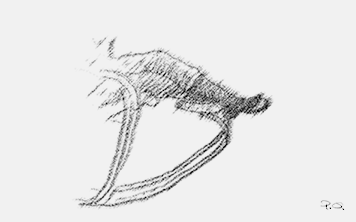
balans®
balans® is a trademark for Norwegian chairs that are characterised by their allowing users to sit in a kneeling posture. Using leg support is one way to allow the user a steeper thigh angle without sliding off the seat, meaning it is easier to retain the natural curvature of the lumbar region.
Chairs growing with the child
Our oldest son was two years old and had outgrown his highchair. I looked for a chair that allowed him to continue to sit in a natural way and at a comfortable height at the grown-ups' table, and discovered that there weren't any chairs like that around. My first reaction was that this was a pity, but as a designer this discovery also entailed a challenge.
Before 1972
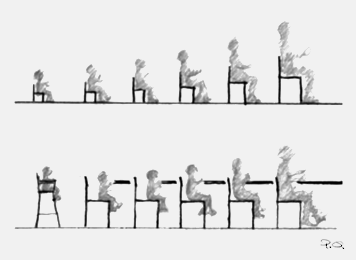
In 1972 the only sitting devices for children from the age of two onwards were special, low chairs, or ordinary chairs designed and intended for grown-ups.
Tripp Trapp was designed in 1972
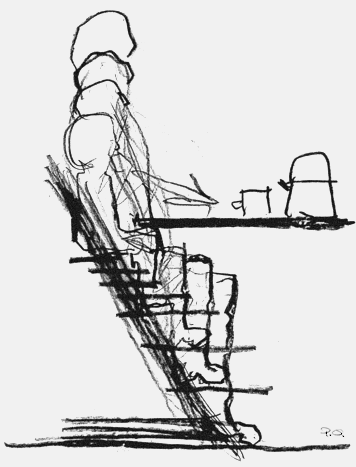
People who want to help shape human beings' material surroundings must be good at observing people's behaviour.
My objective was that one chair should seat persons of all sizes from approximately 8 months and up, in a natural way at the same table.
Visual form
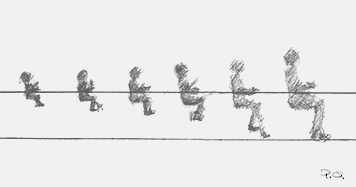
The chair could have been given a visual form in tune with what was then the kitchen furniture trend. The side boards could have been shaped like the letter A, but I chose the shape of the letter L. This resulted in a distinct visual form that underscored the precise functional message and later the Tripp Trapp does not look outdated or old; on the contrary, it has become an icon.
Areas of use
Few scattered thoughts about places where sitting solutions are used.
The living room
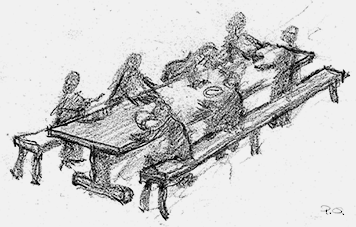
The bourgeois ‘front room’ is the model on which our living rooms have been based.
If the earlier farmhouse living rooms had served as the model, the lounges of our era would probably be an arena for all kinds of activities, such as repairing outboard motors, working at looms and woodworking benches, working at a computer, etc.
Furnishing for passivity
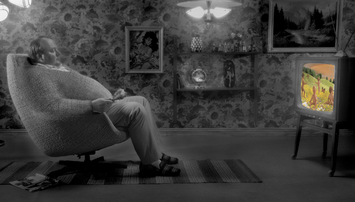
Until recently, we had to get up to change the channel on the TV. Now with remote control you can do this whilst lying down. It is my contention that life in ‘living rooms’ has become more passive and recumbent.
At furniture trade fairs, I can look at a seemingly infinite number of sofas and armchairs designed to make a sedentary lifestyle as comfortable as possible with all their softness and luxury. But when chairs designed for sitting at high tables are exhibited, the comfort of the sitter seldom seems to have been taken into consideration. It appears that the main consideration for buying, say, dining chairs or chairs for the main arena of the household's activities is style and dignity.
The life around the table

I believe we should try to furnish our homes with dynamic furniture for sitting that suits the combined demands of leisure, family activities and work.
Every place for sitting could be a potential workplace.
The body's natural needs remain the same, regardless of whether the activity we perform is eating dinner or carrying out professional work at a desk.
The increasing use of laptop computers further adds to the need for this flexibility.
Standardization
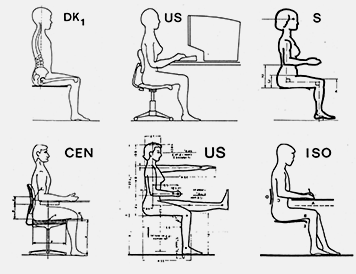
There are any number of standards for work chairs, containing highly detailed descriptions of their shape, size, dimensions and strength. For a designer, these standards are positive tools in the design process, but they may also inhibit and even prevent unconventional solutions from gaining popularity in the workplace. It is almost impossible to get unconventional chairs approved in official regulations and standards.
As far as chairs are concerned, it has taken a very long time to gain acceptance for even relatively small alternative improvements. One example was gaining acceptance for the forward tilt of the seat pan.
What is work
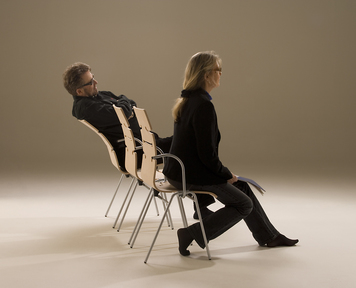
When is your body happiest – after spending a day in meetings, or after a day spent at your own work desk? The answer, of course, depends on what your normal work is. But, for many the answer will be when we have been at our normal workplace. I would like to suggest three reasons for this:
• In a meeting, you probably have much less space in which to vary your posture.
• In a meeting, you probably have to sit for a longer period of time.
• In meetings/conferences, you have to be sitting nicer, more formal postures than you do in your normal workplace.
These three factors suggest that there is a greater need for dynamic chairs in meeting rooms and conference rooms than in the personal office.
In different professions, an increasing number of people are finding that a growing portion of their time is spent in meetings and conferences. This is a neglected area of concern, ergonomically speaking.